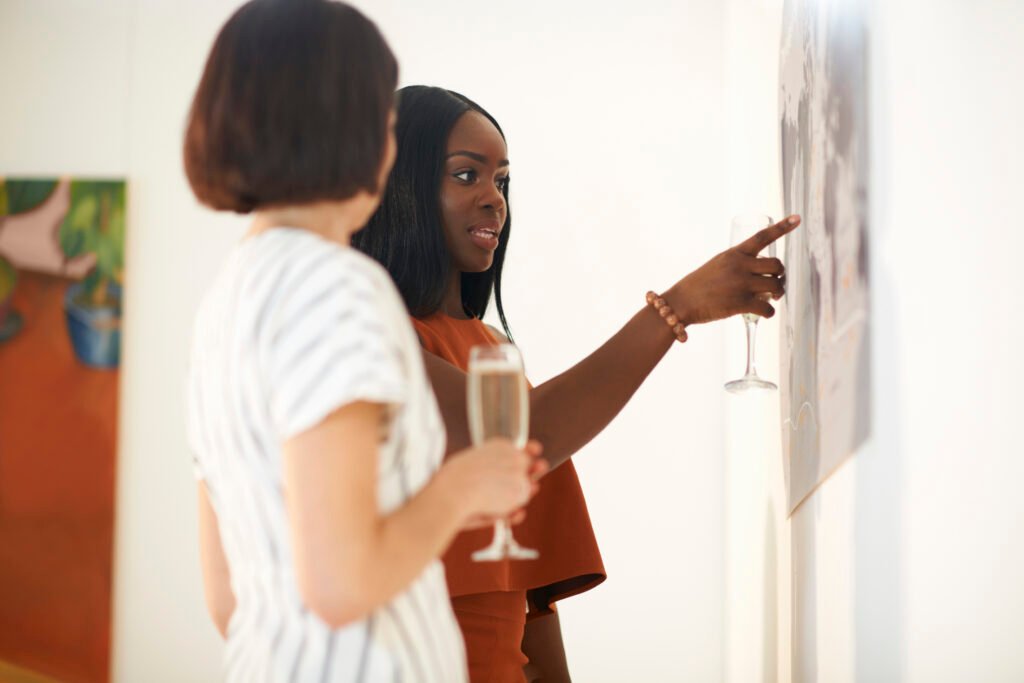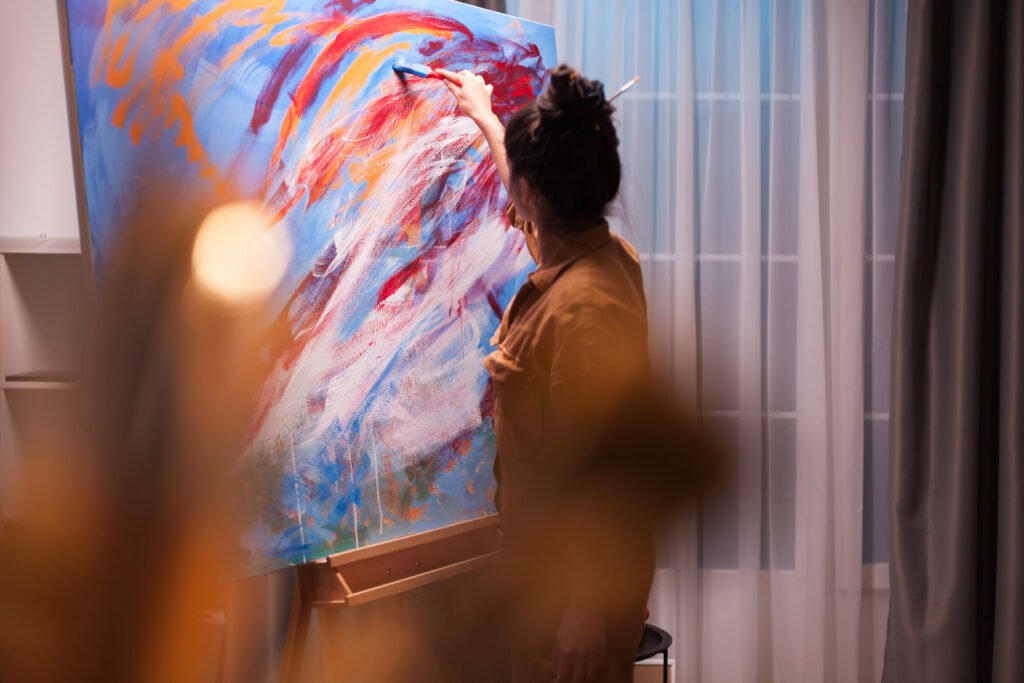Contemporary art is, above all, a response to the time in which we live. It emerges as an artistic movement that breaks away from traditional conventions, making room for new languages, mediums, and intentions. Unlike classical schools or modernist avant-gardes, contemporary production is not limited to a specific style. On the contrary, it is built on diversity, questioning, and freedom of expression.
To understand this universe, it is essential to consider the historical moment when contemporary art gained strength. After the impacts of World War II, artists began exploring not only visual forms but also social, political, and existential discourses. As a result, art-making approached everyday life, emerging technologies, and global tensions, becoming a constant field of experimentation. It is in this context that major breaks with modern art occur, establishing a new aesthetic and conceptual paradigm.
From Modernism to Plurality: The Birth of Contemporary Art
The transition from modern art to contemporary art did not happen abruptly but through a series of transformations. Modern art, characterized by its break from academicism and the use of simplified forms, still held onto the idea of artistic progress. It valued the artist’s gesture and mastery of technique, even when experimenting with new aesthetics such as Cubism, Surrealism, and Expressionism.
However, throughout the second half of the 20th century, many creators began to question the role of art and the artist in society.
Movements such as conceptual art, land art, body art, and performance emerged. They used the body, public space, and time as artistic materials.
This expansion of media and themes broke with the notion of art as an object of contemplation. It shifted attention toward process, experience, and critique.

Unlike modern art, which still sought to define artistic truths, contemporary art values debate, multiplicity of meanings, and the viewer’s active presence as part of the artwork. It takes a stance on the world’s transformations, addressing issues of identity, gender, politics, the environment, and technology. This openness means that art not only represents the world but also confronts and reshapes it.
Moreover, the museum is no longer the sole site of legitimacy. The street, social media, alternative spaces, and even the domestic environment become valid spaces for exhibition and interaction. With this shift, access to art broadens, even though understanding it often leads to conflict and divergent interpretations. This is one of the most striking features of 21st-century art: its ability to unsettle, provoke, and engage with the present.
Art in the 21st Century: Technology, Politics, and New Languages
As we enter the 21st century, contemporary art begins to tackle even more complex challenges. Globalization, the internet, and technological advancement directly affect how art is created, distributed, and consumed. Today, an artist can create a digital work in their studio and reach millions of people in seconds. This changes the logic of circulation and also redefines concepts like authorship, originality, and presence.
At the same time, the environmental crisis, debates on inclusion, and social movements intensify the presence of urgent themes in artistic production. Many artists aim to create experiences that provoke reflection, empathy, and action. Interactive installations, videos, performances, and ephemeral works become tools for impact and awareness, going beyond gallery walls and reaching the public directly.
This ever-evolving art increasingly merges with daily life. It dialogues with other forms of expression such as fashion, advertising, design, and music, dissolving the boundaries between creative fields. In doing so, it reaffirms its role as a tool for cultural transformation. Contemporary art is not a style but an attitude toward the world.
With so many possibilities and directions, understanding contemporary art requires more sensitivity than fixed definitions. It is necessary to observe the contexts, listen to the artists, and, above all, make space for multiple interpretations. The art of the present is fluid, critical, and deeply connected to the experience of those who engage with it.



